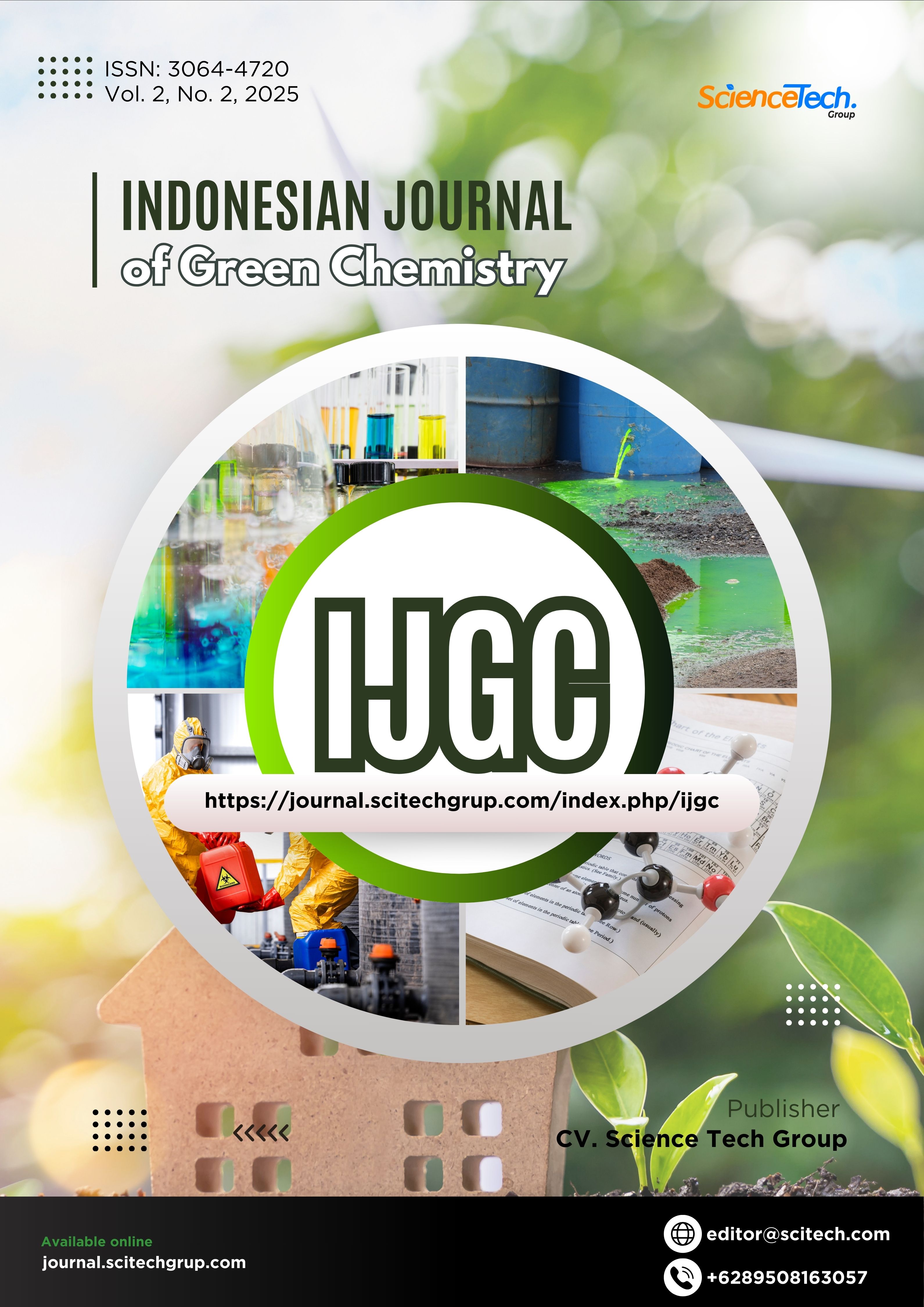Simplified Thermal Catalytic Pathway for 2-Methyltetrahydrofuran from Non-Food Biomass
DOI:
https://doi.org/10.69930/ijgc.v2i2.549Keywords:
2-Methyltetrahydrofuran, Gmelina arborea, thermal hydrolysis, barium chloride catalyst, biomass valorizationAbstract
The growing demand for sustainable solvents and bio-based chemicals has heightened interest in renewable alternatives to petroleum-derived compounds. This study demonstrates an efficient and eco-friendly route for producing 2-methyltetrahydrofuran (2-MTHF) from Gmelina arborea leaves, a widely available lignocellulosic biomass. Thermal hydrolysis was conducted at 80 °C and atmospheric pressure using barium chloride as a low-cost catalyst. The reaction pathway proceeds through hemicellulose depolymerization to pentoses, dehydration to furfural, and subsequent hydrogenation–cyclization to yield 2-MTHF. Reaction time was optimized between 10–50 minutes, with Gas Chromatography-Mass Spectrometry (GC–MS) confirming a maximum yield of 19.47% (951.95 mg/g) at 50 minutes. The yield profile exhibited two distinct maxima, reflecting a balance between efficient conversion and secondary degradation reactions. Compared to conventional noble-metal-based hydrogenation processes, this method eliminates the need for high-pressure hydrogen and costly catalysts, thereby lowering energy intensity and production costs. The approach valorizes an underutilized agricultural residue, reduces environmental impact, and aligns with green chemistry principles. These findings highlight the potential of Gmelina arborea leaves as a sustainable feedstock for scalable 2-MTHF production, supporting its application as a green solvent, biofuel additive, and versatile platform chemical. Future work will focus on catalyst optimization, kinetic modeling, and techno-economic evaluation to advance industrial applicability.

















